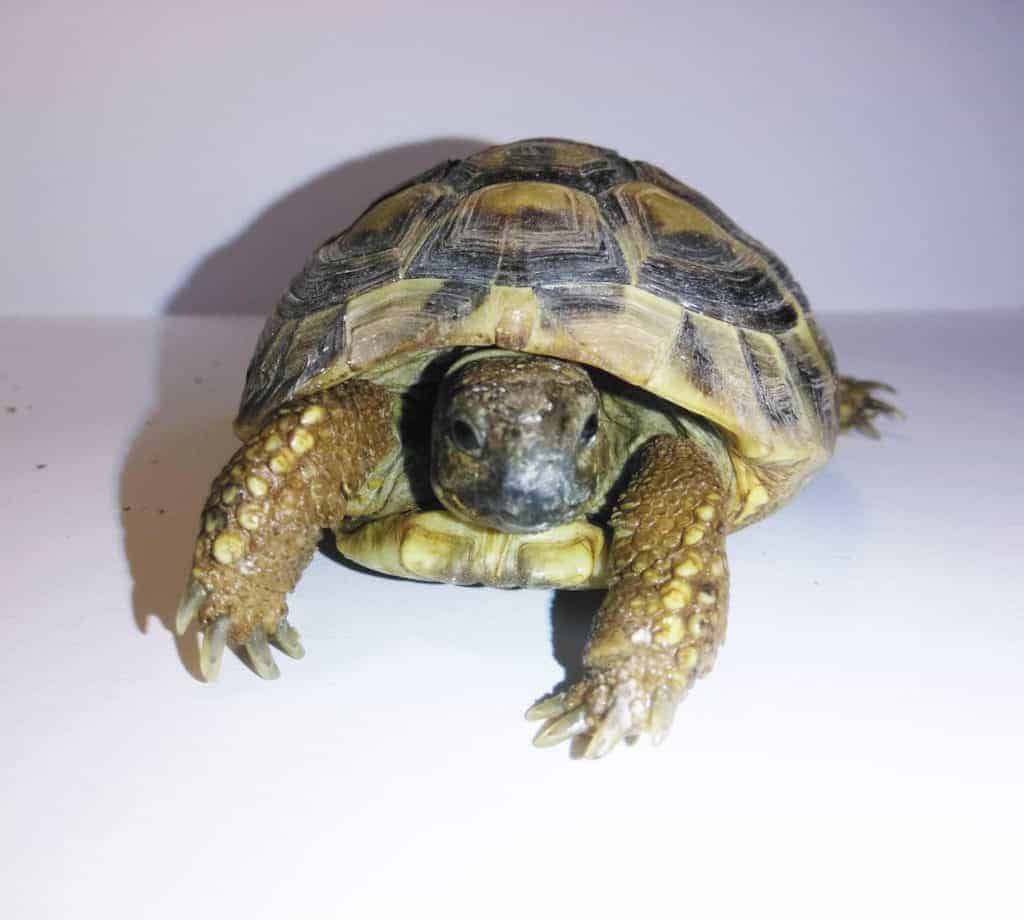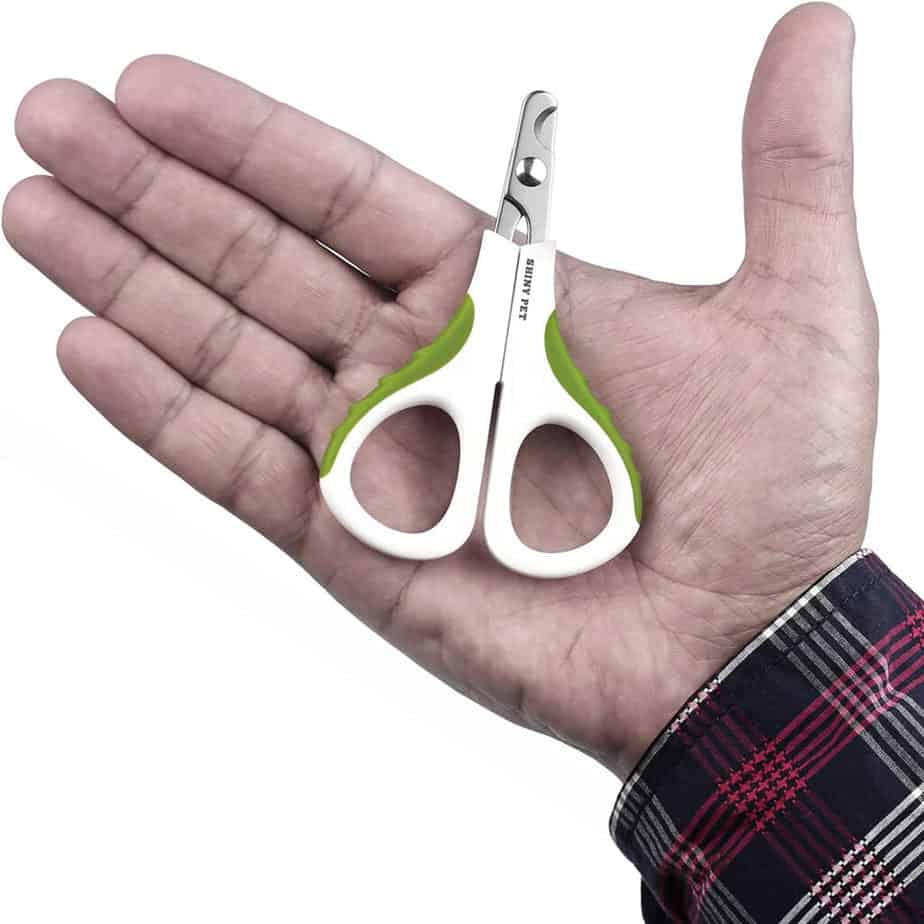
It isn’t usually necessary to trim a tortoise’s nails; however restrictive living conditions in captivity can prevent their nails from wearing down naturally. In this case it may be necessary to trim nails manually, no more than once or twice per year.
Whilst tortoises are by no means simple to care for, it is fair to say that day to day they don’t need the same level of attention as say, a dog or cat.
This means it can be all too easy to be complacent about the needs your tortoise does have, particularly the more obscure elements of their care that only need to be addressed from time to time.
A classic example is the need to keep your tortoises nails trimmed to a reasonable length.
Depending on how closely your tortoise enclosure mimics the real world conditions of their natural habitat, you may never need to cut your tortoises nails at all.
In the wild tortoise nails are naturally worn down by walking on hard rocky surfaces and burrowing into course, sandy soils.

>>> Click Here For Pricing & Reviews on Amazon <<<
How do I Prevent The Need For Trimming?
As a rule I don’t consider it necessary to trim a tortoise’s nails unless they are long enough to impede on their ability to place their entire foot flat on the ground; which is particularly important for their elephantine rear legs.
Typically the rear legs are very strong and do much of the work in burrowing, which again tends to keep the nails short.
If your enclosure doesn’t contain a suitable substrate of a sufficient depth, your tortoise will not be able to indulge their natural burrowing instinct, and by extension their nails will not be filed down naturally.
A deep, moderately sandy substrate is your best bet when selecting something that will keep your tortoises nails short; a mixture of 40% play sand to 60% loam is a safe bet.
In addition to the substrate, it’s well worth having some large flat stones in the enclosure, both because they add a bit of interest and realism, and because they provide an additional source of abrasion to the nails when the tortoise walks on them.
When Do I Need to Trim My Tortoise’s Nails?
If it isn’t possible to adapt your enclosure to keep your tortoises nails trimmed naturally then you’ll need to resort to trimming them, either yourself or with the services of a vet.
In an ideal world you’d choose the vet over your own attempt every time, but at around $100 a time it isn’t the cheapest service.
If you are tempted to have a go yourself then the good news is that it isn’t the most difficult of tasks providing you pay attention to a few critical details, and above all take extreme care over it.
The most important thing to know is that a nerve (also known as ‘quick’) runs through each nail, and if you try to cut them too short you risk cutting through said nerve. This will be both painful to the tortoise and will result and a bleeding open wound that risks becoming infected if not treated.
There are really only two possible choices of tool suitable for cutting tortoise nails (and even then there is a lot of debate over which is the more suitable), either:

- Nail clippers, much like those that you might use in your own nails, but it’s most appropriate to choose cat or dog claw clippers. I prefer the ‘scissor’ type over other types as you have better visibility and control over what you’re doing
- A ‘Dremel’ type hobby drill fitted with a small cutting blade or grinding disc
Personally I don’t like the second option for a number of reasons, not least because the sound of an electric drill is likely to spook a tortoise, and because it’s just overkill for cutting something as small as a nail.
There are powered grinding cutting tools available that are ostensibly designed specifically for the task of cutting pet claws, and although they might be slightly more suitable given they are likely to be quieter, it still isn’t really necessary.
That being said tortoise claws aren’t as soft and easy to cut as human nails, which is why it’s worth buying a decent cat or dog nail clipper for the task.
Trimming Your Tortoises Nails
To ensure you don’t cut your tortoises nails too short a good trick is to shine a bright flashlight through the nail from behind while you cut; this will enable you to clearly see the nerve inside the nail.
It’s best not to cut too close to the nerve; around 3mm or ⅛” is a safe distance.
Like all activities that are distressing for tortoises, cutting their nails can be an unpleasant experience no matter how gentle you are. One of the usual responses to distress is for a tortoise to poop. With that in mind you’ll want to put down a bit of kitchen towel under the tortoise whilst you cut their nails.
It’s also well worth getting a second pair of hands to help you trim your tortoise nails- even the smallest tortoise can be deceptively strong, and the last thing you want is an unexpected movement from the tortoise whilst you’re wielding sharp tools.
So with that in mind, the best approach is for one person to hold the tortoise firmly in place whilst the other concentrates on the cutting.
Should you accidentally cut too short you might accidentally cut the nerve in one of your tortoise’s nails, first of all don’t beat yourself up about it. Even taking the greatest care in the world, it isn’t always easy to do this perfectly, especially when your tortoise doesn’t want to cooperate.
The good news is, this isn’t usually a serious injury, and having some corn starch on hand to dab the wound and stop the bleeding is a useful precaution, as is some anti septic ointment.


